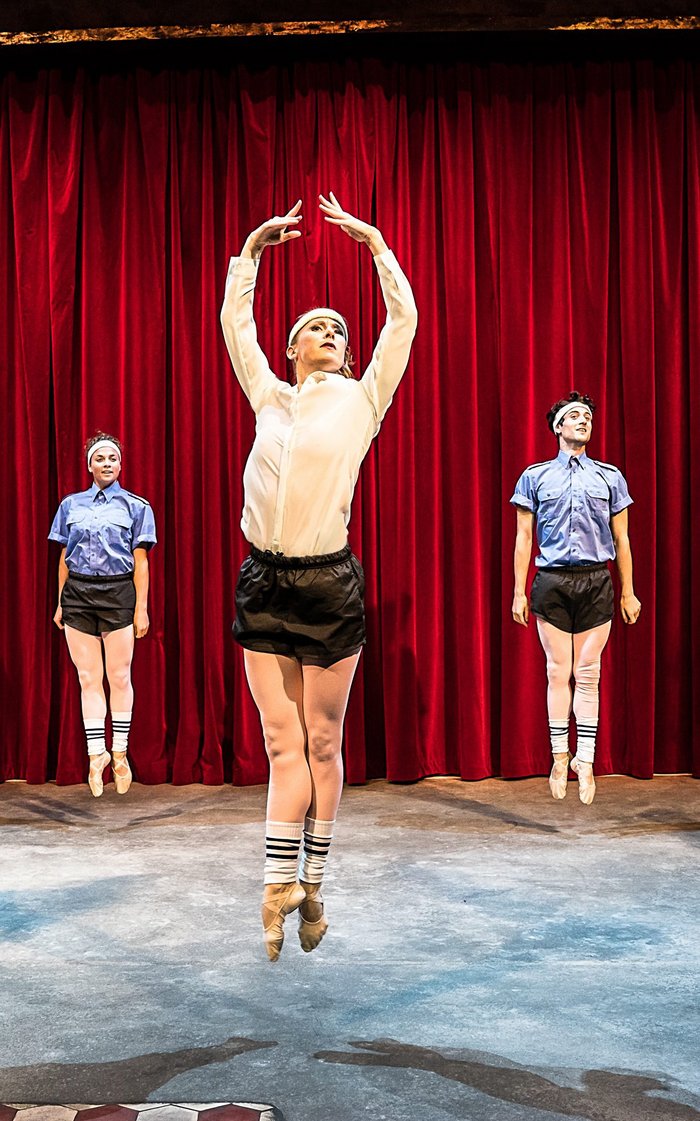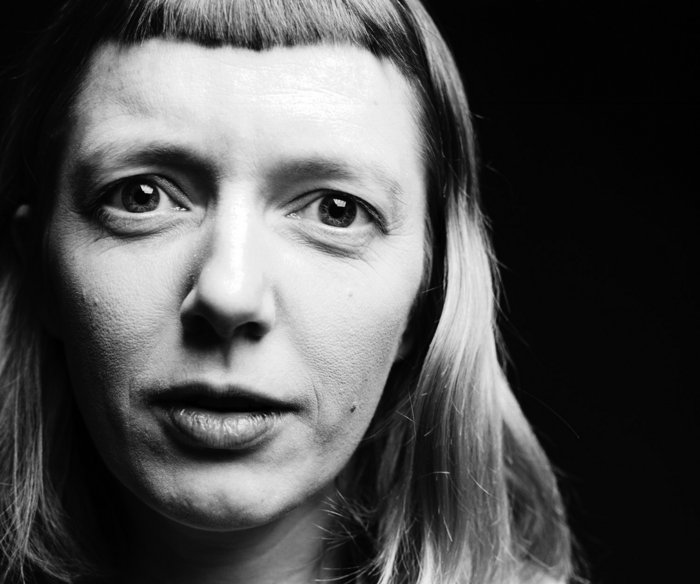There are two parallel ways to explain this odd stage design. From the spectator’s point of view, it means that we are actually behind the scene or, to put it differently, we are behind the fourth wall. We are part of the illusion and in that sense, we are also responsible for its message and effects. We are no longer allowed to ignore the atrocities we see in front of our eyes, whether we like it or not. From the performer’s point of view, it means that the “reality” they live in, the way they understand the events, is really an illusion.
The piece confirms both points of view emphatically as Mikey doesn’t stop wondering whether the fourth wall is still present. But what is most striking is his overall attitude during the play. He swears by the texts of Stanislavski, the theorist who demanded that the actor should really feel the emotions he is representing (an anti-Diderot therefore). Through the teachings of the Actors Studio, this still remains the predominant model for the bulk of American movies. Because of their impact, these define the way in which people understand themselves to a large degree. The result is one we all know: endless psychobabble leading, after as endless difficulties, to redemption or any other happy ending that forgets all about the victims along the way. But if the play succeeds in something, it is at least this: it shows most clearly how this sentimental psychobabble about personal redemption more often than not serves as an excuse for inexcusable conduct. That is exactly the structure of this play: an endless series of fake-real sentiments, inspired by a fake-real idea of authenticity, that cause enormous human damage but are still absolved by the happy reconciliation between Mikey and Georgie. In no way can this leave the spectator unharmed. He or she has to take a position on this, whether he or she likes it or not.
This is all confirmed by the strangely hybrid nature of the choreography. In essence, most actions are performed in an abstract way, as abstract as the ballet code initially was. Which is funny, because the light movements of the dancers (some of whom are indeed young dancers, though others are actors or have no proper professional training either as an actor or a dancer) are more often than not in stark contrast to what Johanson tells us they mean. The fights with the Ballet Bandits, for instance, are choreographed as if no blows were dealt. Except for one detail: the corps de ballet does make an effort to mimic its consternation in the direst moments of the play. That is also true for the main protagonists. Usually they fully engage in the abstract ballet, but in the crudest scenes they start “acting” – albeit in a very crude way too. Their mime is closer to 19th century gestural and facial emphasis than to contemporary acting. On closer inspection, however, this proves that even the balletic moments are not really homogenous. They are a hotchpotch of ballet, calisthenics (exercise) and slapstick. The hybrid nature of the dance is telling in its own way. It reveals an arbitrariness in the way we make use of what is at hand to gratify ourselves, if only by seducing our audience.
This in an excerpt from the text “Made Up of Time and Energy” by Pieter T’Jonck, first published in the book “The Life and Work of Nature Theater of Oklahoma”, edited by Florian Malzacher.

